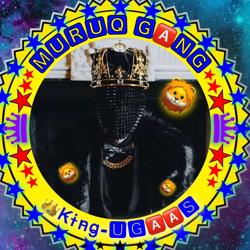BATUR BOYS AND GIRLS on Clubhouse

Description
Afghanistan is a multi-ethnic country. For instance, we have tajiks, phastuns, hazaras, uzbeks, turkmen, nuristanis and several other minority groups. However, the turkic population is around 45 % of Afghanistan's population.
Hazaras - 25%
Uzbeks - 12%
Turkmen, Aimak and Kyrgyz- 8%
Total: 45% of Afghanistan population are turkic/mongol. It is important to note that turkic and mongol khans governed Afghanistan for several centuries. The most recent Turkic-Mongol emperor was Babur Shah and he governed Afghanistan from 1504 to 1530 and Babur shah passed away at age 47 and he was buried in Kabul. Babur's grandsons took over the power and they governed Afghanistan until the 18th century. Therefore, the turkic people of Afghanistan are the grand sons of Amir Timur and Babur Shah.
The Turco-Mongols founded many Islamic successor states after the collapse of the Mongol Khanates, such as the Kazakh Khanate and Tatar Khanates that succeeded the Golden Horde (e.g., Khanate of Crimea, Astrakhan Khanate, Kazan Khanate) and the Timurid Empire, which succeeded the Chagatai Khanate in Central Asia. Babur (1483–1530), a Turco-Mongol prince and a great-great-great-grandson of Timur, founded the Mughal Empire, which ruled almost all of the Indian subcontinent. The Turks and Tatars also ruled part of Egypt, exercising political and military authority during the Mamluk Sultanate.
These Turco-Mongol elites became patrons of the Turco-Persian tradition, which was the predominant culture amongst the Muslims of Central Asia at the time. In subsequent centuries, the Turco-Persian culture was carried on further by the conquering Turco-Mongols to neighbouring regions, eventually becoming the predominant culture of the ruling and elite classes of South Asia (Indian subcontinent), specifically North India (Mughal Empire), Central Asia and the Tarim Basin (Northwest China) and large parts of West Asia (Middle East).

















